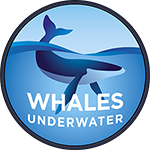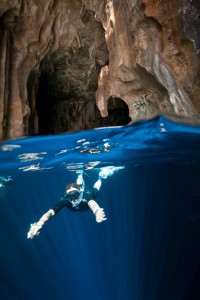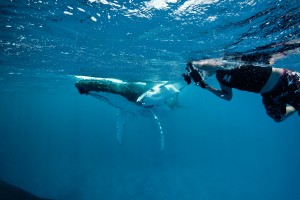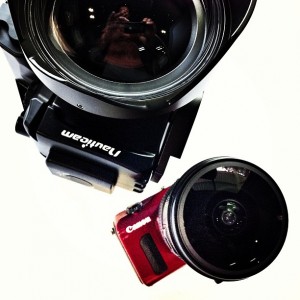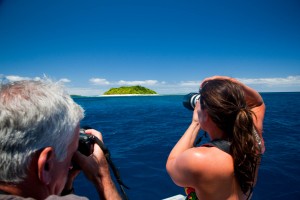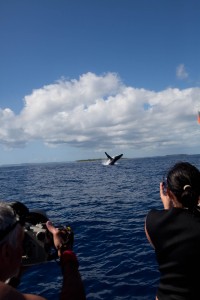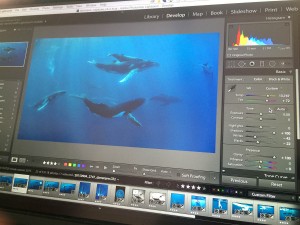Photographers
Our tours are designed with photographers in mind. We don’t expect you to arrive in Tonga as a whale photography expert, but its fine if you are. If you want to make the most of the tour, we would suggest that you have an understanding of basic photography principles so that the tuition we supply in the limited time we have together can be about things specific to underwater/whale photography. We can, and do, accommodate all cameras from point-and-shoots up to housed full-frame DSLRs on the boat, and caring for equipment is all part of the day’s activities.We respect the whales and the privilege they afford us and we don’t put photographs ahead of the whales’ best interests.
Underwater camera equipment
If you are an experienced underwater photographer used to wide angle lenses and RAW file formats, you probably don’t need to read on. If you are new to this and need to purchase equipment, do so well in advance, do a basic photography course and practice with it (even in a pool) prior to the trip. Please do just not turn up and take a new camera and/or housing out of the box. Underwater photography is a big investment in dollars, time and energy and there are really four options to choose from based on your level of commitment: All-weather cameras; Housed Point and Shoot compacts; Mirrorless Systems and Housed DSLRs. Where you fit in to that range will depend on your budget, your commitment and your ability to physically move your kit through the water .. and through the airports you’ll transit en-route to Tonga. A housed full-frame DSLR system will add an additional 20-25kgs to your luggage, not to mention the hit on your bank balance. A great alternative to a DSLR is a “mirrorless” system (such as the Canon EOS-M3) which offer great image quality with out the weight and bulk of a DSLR. The best of the housed compact cameras is probably the Canon G16/G1xII/G7x (which have RAW file capability), but ensure you get a housing that allows full control of settings. Some third-party housings allow for the addition of a wide converting dome on compact cameras. All-weather cameras will get photos of whales but aren’t ideal as you are limited to .jpeg files which have limited capacity to be adjusted in post-processing. GoPro cameras are great for video, not so great for quality stills. Ensure you have a way of holding your GoPro, such as a tray and handle otherwise your videos will be very jerky due to their extremely light weight.
We have some rental equipment available, see the rental page for details.
Terrestrial camera equipment
Don’t forget to bring your ‘land” camera as well… the whale’s surface activity is sometimes awesome, and the islands are picturesque. If you don’t have two cameras consider a compact point-and-shoot for surface snaps. The Tongan Fluke Collective is an initiative to collect individual tail flukes I.D. photographs from as many photographers who visit Tonga as possible. Your images of tail flukes could be a valuable addition to the database.
Photography Tuition
Darren and/or your photography host will be available to answer your photography questions at all times. Obviously its hard to do complicated tuition on the boat while we’re looking for whales (our main priority) or in the water, with snorkels in our mouths, so we want to get as much of the basics sorted early in the tour and fine-tune things during our afternoon sessions and over meals.
Post-processing and editing time
Each afternoon we return to the house and have a couple of hours before dinner to download, edit and process the day’s images. Guests who want to make the most of this time will have their own laptop and post-processing software. Our preferred workflow uses Adobe Lightroom. Please consider purchasing Lightroom and doing an introductory course in its use prior to coming. We do not really have time to run basic computer courses, and the techniques we would like to share are particular to underwater photography – participants will get the most out of this editing time if they are already familiar with their computer and with Lightroom’s basic functionality and workflow or that of their chosen program.
